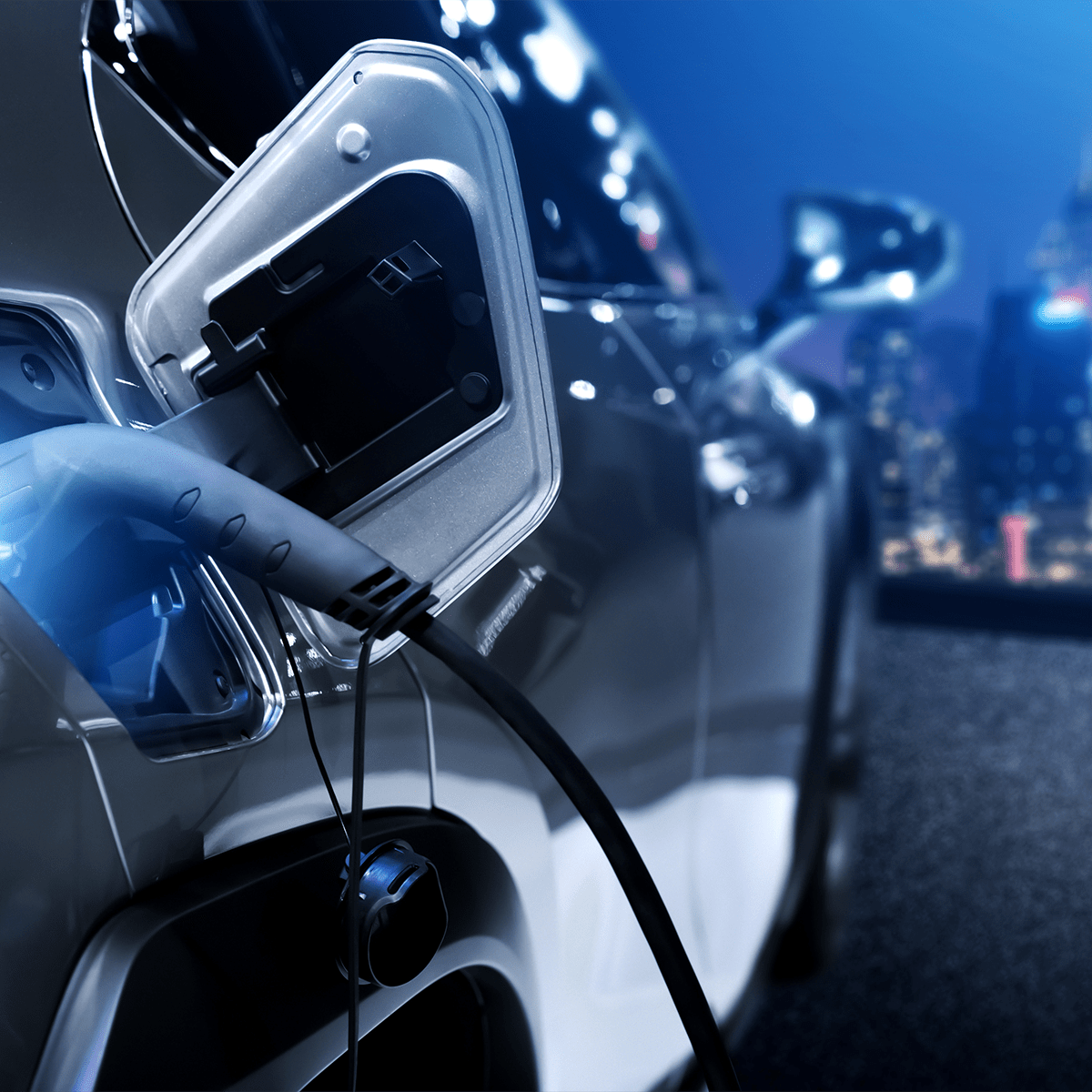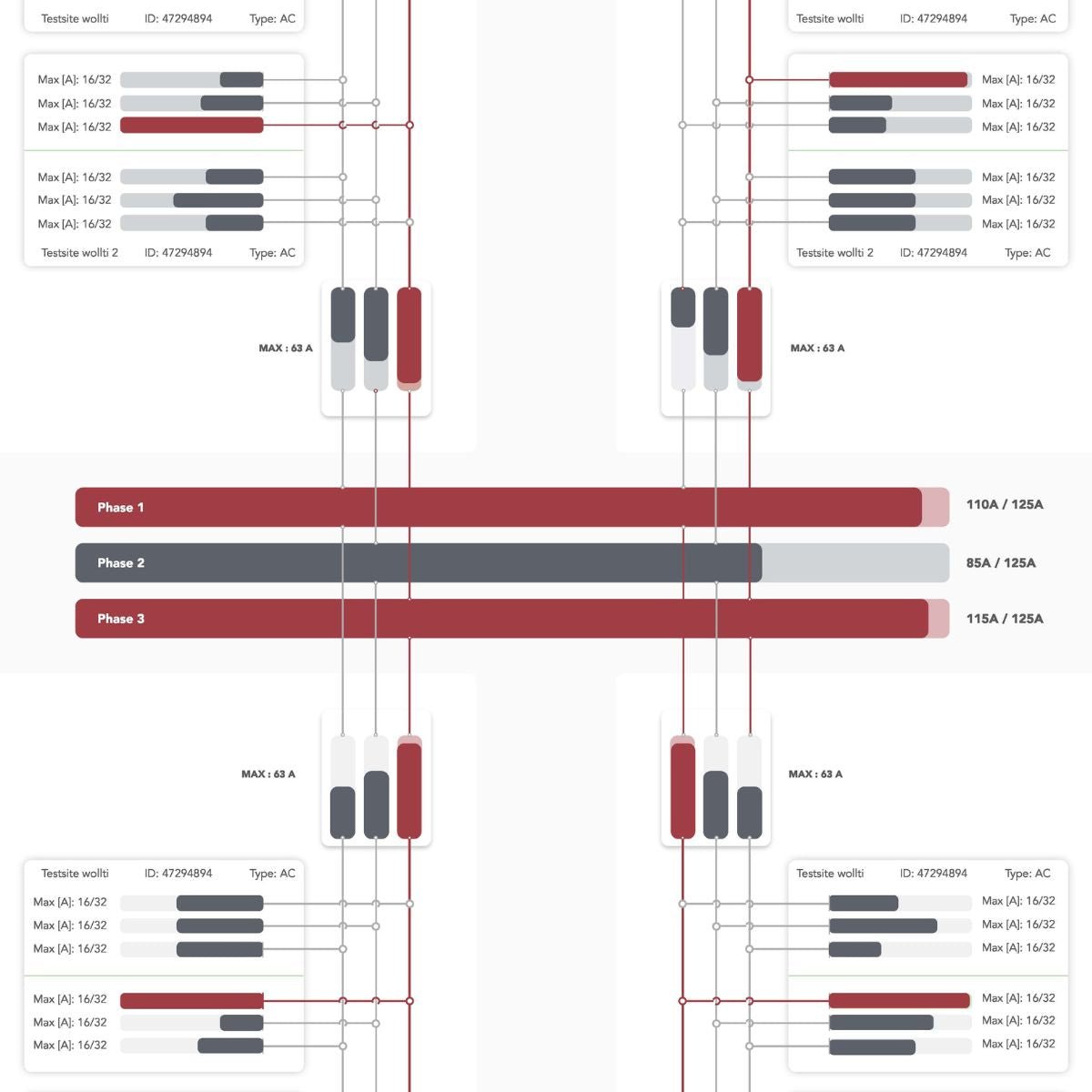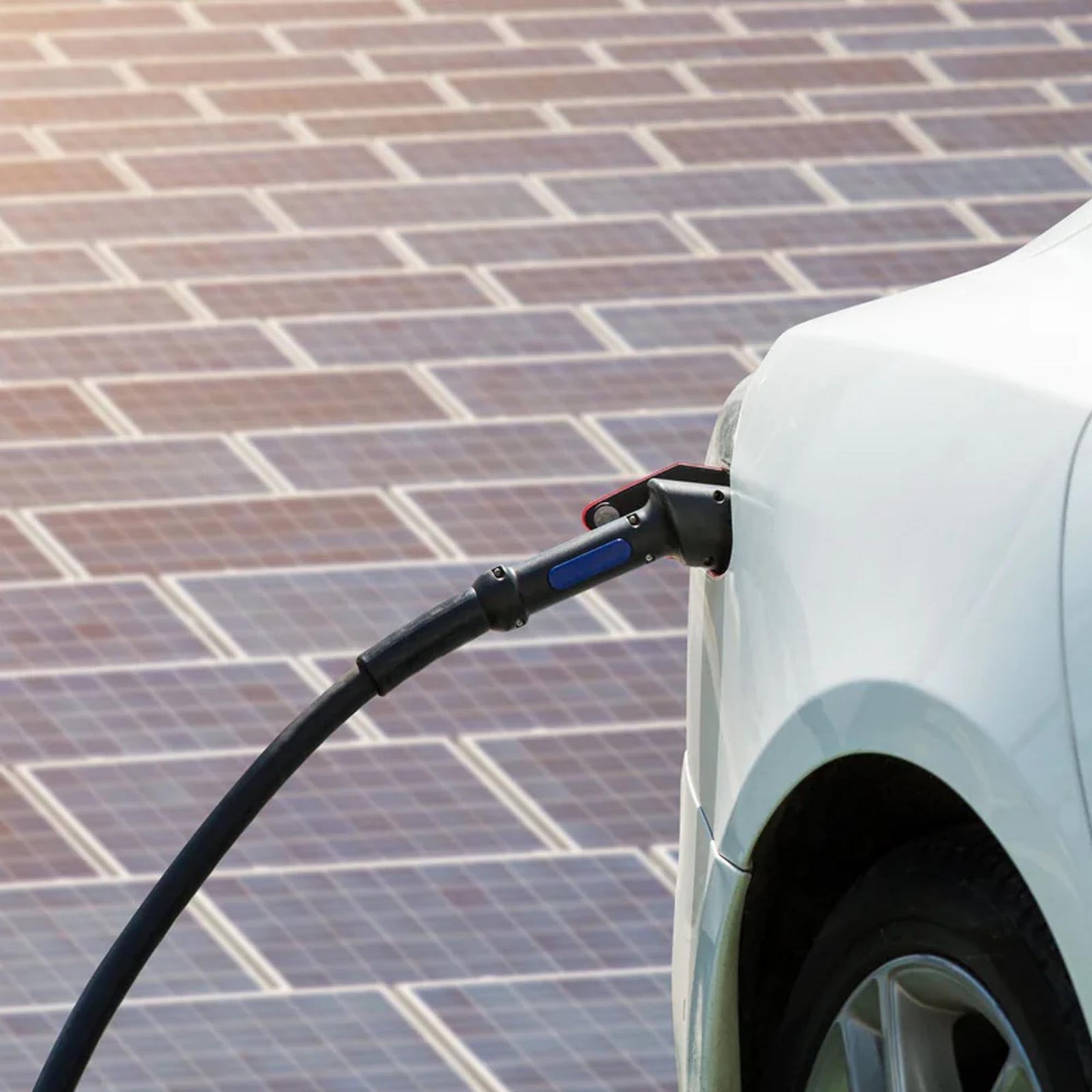What is two-way charging and why it's not a reality yet
Two-way charging is a hot topic of discussion among e-mobility professionals and enthusiasts. But when you dig deeper into what two-way charging actually is, you may end up with a large selection of articles that are overly optimistic, unreliable, or even completely wrong.
The energy consumption needed to charge an electric car is greater than that of ordinary household appliances that most people have at home. It also has a high battery capacity that sits mostly idle. All this makes EV charging and V2G very useful for balancing the electricity grid and taking advantage of price differences.
What is two-way electric car charging?
In two-way charging, current can flow in two directions: first from the network to the battery of the electric car and then back to the network. In principle, many devices have been able to do this for a long time. Each battery stores electricity and then releases it again; ordinary car batteries start the car and power banks supply energy to mobile phones.
The rule of thumb is this: the mains power is always alternating current (AC), while the car battery, solar energy and external batteries use direct current (DC). When you charge your electric car, the AC from the grid is converted to direct current. This conversion takes place either in the charger itself, as in the case of DC charging stations, or in the vehicle when using an AC charger. If you want to transfer the power back to the grid, it has to go through a reverse conversion, which is not possible with a regular charger.
How does two-way charging work?
Standard electric car chargers/cars are not capable of DC-AC conversion, while bi-directional chargers ensure the conversion of current back from the electricity used by the car battery (DC) back to normal home electricity (AC). Other technical issues also need to be resolved. This way you can use the energy stored in the car battery and use it as an electricity source for your house or feed it back into the grid.
Advantages of two-way electric car charging
- Improved energy demand management and balancing: Bi-directional electric car chargers help balance local consumption or power grid fluctuations by utilizing stored car battery energy, preventing power spikes during peak times.
- Financial benefits i.e. selling energy when energy prices are high or buying when energy prices are low Homeowners using bi-directional chargers can potentially sell excess energy in the future to local utilities, making money and taking advantage of other users and utility companies.
What can two-way charging be used for?
With two-way charging, you can do a lot of different things, such as providing electricity for your home appliances, using it as backup power in case of network problems, selling it to the network or using it in your house at a cheaper price.
Two-way charging methods
V2L (Vehicle-To-Load)
This is the easiest and currently commercially available two-way charging method. It allows you to use the electricity from your electric car's battery to use/charge low-consuming devices. You can make a cup of coffee just by connecting the coffee maker directly to your vehicle in places where electricity is not available. To use V2L two-way charging, you need a standard Schuko socket (e.g. Ford Transit) or an adapter for the Type2 charging port in an electric car (e.g. Hyundai IONIQ 5 and IONIQ 6). Its maximum power is 1.8-3.7 kW, but it is enough to use a hair dryer and charge the batteries of tools.
V2G (Vehicle-To-Grid)
With V2G, Electric Vehicles can charge the battery when demand or price is low, and release it from their batteries back to the general electricity grid during peak times or when the price is high. Think about the usual situation when people come home from work in the evening, cook dinner at the same time, turn on the lights and other electrical devices and maybe also charge their electric car. All in all, electricity consumption suddenly increases significantly. The entire electrical system suffers from a high load, which often also leads to high prices. Especially now, when renewable energy is often a large part of energy production, it is necessary and economically viable to balance the load when, for example, wind/solar power is less available. When the demand for electricity is high, electric cars can discharge electricity into the grid, acting as a distributed energy source. Similarly, during peak times, they can be charged.
The goal of two-way charging is to improve grid stability, reduce price volatility and reduce the need for additional power plants. A big advantage is also the distributed battery capacity that can be obtained in this way, which will be very useful in the future. V2G is also always connected to the SaaS system, i.e. it is intelligent and controllable. This means that when smart features are needed in the power grid, they are available.
V2H (Vehicle-To-Home)
With V2H, your electric car can transfer electricity from the battery to your home or any other building. Like V2G, this process requires a DC-AC converter in the EV charger. The difference is that in this case the energy is fed into the electrical system of a particular building. For this reason, one practical purpose is to optimize energy consumption in your own housing association or company. For example, you can charge your electric car at night, when your TV, washing machine and other electrical appliances are off and the electricity demand is low and electricity is cheap. Then you can use this stored energy as an electricity source for your own home during the day, when electricity consumption is higher. In this way, you not only promote the stability of the electricity grid, but also save money due to fluctuating electricity prices.
Another possibility is to connect the excess solar energy to a two-way V2G charger. This allows you to generate electricity, store it in your vehicle and release it when needed. Of course, you can also benefit from a backup power source, which gives your property protection during power outages.
Electric car models suitable for two-way charging
Already now and especially in the future, electric cars with the possibility of two-way charging are brought to the market. However, without standards, which are crucial to the use of appropriate software or reasonably priced EV chargers, you can only utilize V2G technology in experimental environments.
| Manufacturer | Plug - AC/DC | Type |
| Nissan Leaf | CHAdeMO - DC | V2H / V2G * |
| Nissan eNV200 | CHAdeMO - DC | V2H / V2G * |
| Mitsubishi Outlander / iMIEV | CHAdeMO-DC | V2H / V2G * |
| Hyundai Ioniq 5 / 6 | Schuko - AC (1-y) | V2L |
| Kia EV6 / Niro EV | Schuko - AC (1-y) | V2L |
| MG 4 / 5 / Marvel | Schuko - AC (1-y) | V2L |
| Skoda Enyaq (77 kWh) | CCS - DC | V2H / V2G * |
| Volvo EX90 | Schuko / Type 2 / CCS - AC (1/3-v) / DC | V2L / V2H / V2G * |
| VW ID.3, ID.4, ID.5, ID Buzz (77 kWh) | CSS - DC | V2H / V2G * |
| Polestar 3 | Schuko / Type 2 / CCS - AC (1/3-v) / DC | V2L / V2H / V2G * |
*Under development/coming soon. Source: ADAC 12/2023
For example, the VW ID.5 is technically equipped with a capacity of 77 kilowatt-hours for V2H charging, but currently there are no suitable low-cost AC chargers and VW also limits two-way charging quantitatively. The few bi-directional DC charging stations available that promise V2G and V2H capabilities tend to be very expensive and therefore useless for households. In addition, these expensive charging stations may become obsolete in a few years as technology advances.
Automakers are increasingly implementing pilot projects to test technology. For example, Hyundai is currently testing charging in a V2G environment or V2H charging using customized software in the IONIQ 5. Cupra and Polestar are also cars where V2G/ V2H is possible. Charging has been possible with cars equipped with CHAdeMO connectors for longer, and Nissan Leaf vehicles have been in use in several test environments for several years. Since CHAdeMO is gradually running out and these V2G or V2H charging stations will not be available in the future, it does not make financial sense to invest in this.
Bidirectional DC chargers are slowly entering the market, and in the near future finding one at a reasonable price is still a challenge, and in addition, customized software work is currently required. Many companies use different test environments and we at Wolttinen Oy also have 2 environments where we test V2G software. The items include multiple car chargers and slow chargers, complex loads, solar power, multiple fluctuating loads and also separate batteries. It will help us to develop the system and get everything needed immediately ready for commercial use once the standards, ISO15118 based OCPP protocol, chargers (both AC and DC) and cars are ready for this new and very important technology.
Why is the development of two-way electric car charging so slow
The market entry of electric cars that support two-way charging and suitable chargers is slow and does not seem to grow dramatically or as planned.
Why is this? There are several reasons and below are the most significant of them:
- The electricity grid must always be balanced, so communication with the grid company is also necessary. The electrical network must remain balanced at 50 Hz all the time, which means that you can't supply it without intelligence without controlling energy from any point.
- Legal and regulatory questions remain unanswered. Car manufacturers, network operators, charger manufacturers and government regulators must find common ground with the standard. Because there are many different parties involved, it is complicated and time-consuming.
- It's also about money. For example, how should the electricity fed back into the grid be taxed? The owner of an electric car may charge his car at the employer's office for free and then use money to feed it back into the grid. Or earn money by buying and selling energy. Compensation for battery use must also be considered, as well as a large number of other practical issues.
- The number of discharge cycles affects the service life of the car battery. Constant charging and discharging shortens the life of the battery, which may lead to the need to replace it sooner. This is also a problem for car manufacturers when they try to solve practical problems related to battery warranty, for example. The battery of an electric car is the most expensive part of an electric car. It is still completely unclear who will pay the costs of a possible early battery replacement. Does it go to the car manufacturer, the network operator through compensation, or the vehicle owner?
Until these uncertainties are resolved, the practical implementation of bidirectional charging faces significant challenges. However, there is a big difference in battery wear if you compare high-power direct current (DC) to alternating current (AC). Owners of electric vehicles are recommended to charge as much as possible at home with an AC charger to avoid wear and tear, and therefore this technology also seems better for V2G charging. However, DC also has clear technical advantages. It remains to be seen which method for V2G will be the winning technology.
Summary: A standard smart charger is typically enough for electric car owners long into the future
Many electric car users are interested in two-way charging because it is technically new and interesting. Naturally, it also offers clear advantages, such as ensuring capacity during power outages and helping to pay less for electricity. However, it is important to note that V2G technology is not yet quite ready to offer these obvious benefits, or that it will not be economically viable in the near future. Although there are a few two-way charging stations available, they cost a lot and it is unclear how they can be used and at what intervals. Once the technology/standards are agreed upon, these chargers will likely be considered obsolete as no new features have been added as the bi-directional charging standard has evolved. The good news, however, is that if you have a smart OCPP-compliant charging station that prevents network overload and that you can optimize, you already have many similar types of benefits.
When we talk about two-way charging, we talk a lot about the stability of the network without taking into account the economic opportunities between the selling and buying prices of electricity. So you can make money by selling electricity back to the grid when it is expensive. But before that, you need to get an expensive V2G charger and choose an electric car based on whether it supports such charging and more. Also, the car battery may need to be changed sooner if it is used for two-way charging. But surely all this will be a reality in the future and probably it will also be financially viable.
Do you already need two-way charging?
Despite the exciting possibilities of two-way charging, a simpler and quickly usable solution is available: An intelligent charging system with dynamic load management and flexible Spot tariff optimization. A good example is the Woltti system's OCPP-compatible chargers. A charging device is an electronic device comparable to consumer electronics, which typically has a life cycle of 10 years. Since most of the investments are infrastructure that can be used later, it doesn't make sense to wait for V2G at the moment. V2G is also developing and new features are being added, so you are basically in the same situation as with computers. You can be sure that there will be better machines next year and if you decide to wait, you will have to do it forever.
Since the popularity of electric cars will grow enormously already in the next few years, the best choice is to make the system itself compatible (infrastructure, which is the biggest investment) and change the chargers maybe in 5-15 years, when the technology is truly available. Of course, some technology enthusiasts want the V2G features to be used earlier, and this is good, because that way the system develops and it can be tested in a real environment.
Why is V2G the key technology of the future?
The big challenge of the electricity grid at the moment and especially in the future is uneven electricity production and electricity consumption, which lead to great price volatility. Wind energy is not available when there is no wind. Solar energy is not available on cloudy days and some large production facilities may be randomly out of service. As we know, the demand for electricity also varies a lot. In cold weather, much more energy is needed for heating (And besides, there is often no wind, and there is also no solar energy). Companies use more electricity during the day, for example when production is running. Charging of electric vehicles also often takes place simultaneously. Many people come home from work and start charging their cars and use more electricity anyway. All of these put a heavy load on the electricity grid and make it difficult to achieve balance. All this together means, in addition to new technologies, also huge investment needs in the traditional electricity network itself. According to all predictions, a smart electricity grid is needed, more decentralized capacity for different batteries and also more means to balance the grid (hydrogen, heat, hydropower, etc.). In addition, significantly more investments in power lines and other network infrastructure are needed. This will also have significant global effects on the demand for raw materials.
Smart chargers, including the OCPP chargers of the Woltti system, use dynamic load balancing to keep the load under control while also taking advantage of intelligently optimizing lower prices. This helps balance the network at low cost in a price-driven manner and is already readily available with existing technology.





Leave a comment (all fields required)